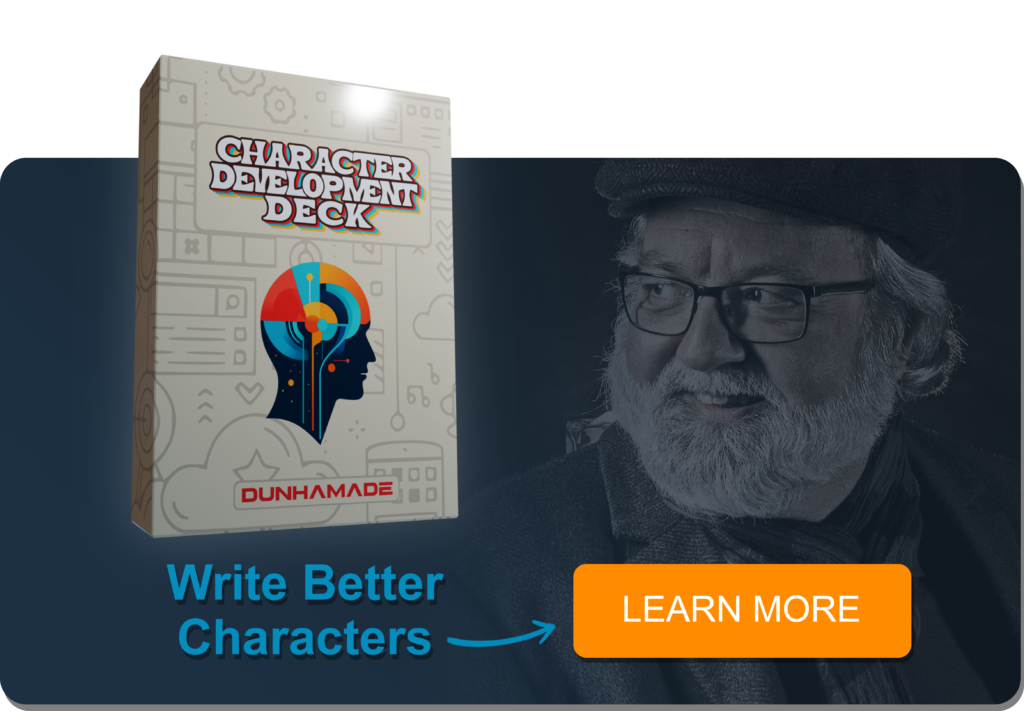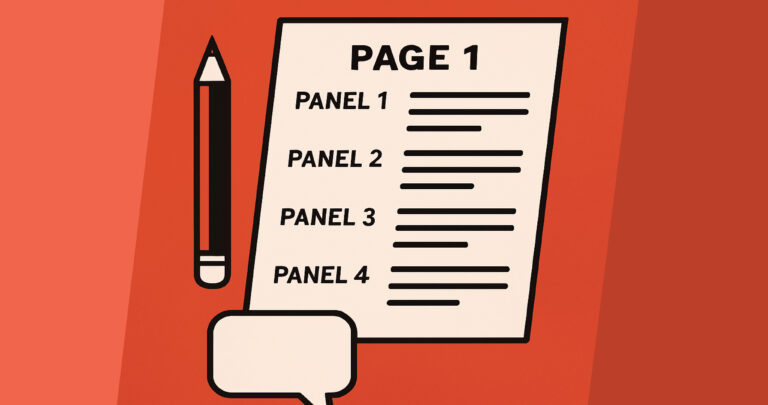Breaking the Mold: Customizing Classic Story Structure

Story structure is the most powerful tool in a writer’s arsenal. Traditional structures like the Three-Act Structure or the Hero’s Journey have helped to inspire more favorite stories than can be counted. But suppose your tale falls outside the neatly defined categories?
Here’s the truth: you don’t need to choose between structure and creativity. You can collaborate with story structure to support your story, keeping what is working and reworking what is not.
In this post, we’ll explore how to customize classic story structure so that it works for you, not the other way around.
Why Use Story Structure as a Starting Point?
Now, before we tackle breaking the rules, let’s talk about why story structure is even necessary to use in the first place. It’s like having a map of your story. With a solid structure, you’re given a tool for laying out the story so that your story stays tight, makes sense, and moves on an emotional level.
Structure also assists you in pacing your story, keeping readers interested, and making sure you strike those critical emotional points, such as tension, conflict, and resolution.
But while classic story structure is extremely useful, being too loyal to them can sometimes feel like trying to squish your own one-of-a-kind tale into a mold that won’t fit. That’s where customizing story structure comes in.
Steps to Customize Story Structure
Step 1: Learn the Rules Before You Break Them
You need to know how story structure works before you can change or invent it. Study well-known structures like the Three-Act Structure, Hero’s Journey, and Save the Cat. They all consist of go-to elements: a hook of an opening, a middle that builds conflict, and an end that delivers payoff.
Once you know the beats, then you can make a choice as to what you want to keep and what to modify. You ask yourself:
- Which of these story structures really works for my story?
- Which are I finding that I don’t need, or which are too constricting?
By asking these kinds of questions, thinking and rationalizing, you can create a story structure which serves your vision, not one that encumbers it.
Here’s a quick rundown of some commonly used story structures:
The Three-Act Structure
The Three-Act Structure is one of the most classic and widely used story structures. It divides your story into three essential parts:
- Act 1 (Setup): Introduce the world, characters, and conflict. End with an inciting incident that launches the story.
- Act 2 (Confrontation): Escalate the conflict. Characters face obstacles and grow.
- Act 3 (Resolution): Deliver the climax and resolution. Tie up the main threads.
Commonly used in: Novels, screenplays, plays, almost every narrative form.
The Hero’s Journey (Monomyth)
The Hero’s Journey, popularized by Joseph Campbell, is a 12-step structure that follows a hero on an adventure, through trials, and ultimately transformed.
The 12 Steps of the Hero’s Journey:
- Ordinary World – The hero’s normal life before the adventure.
- Call to Adventure – The hero faces a challenge or quest.
- Refusal of the Call – The hero hesitates or doubts.
- Meeting the Mentor – A mentor guides or equips the hero.
- Crossing the Threshold – The hero enters a new, unknown world.
- Tests, Allies, and Enemies – The hero encounters trials and relationships.
- Approach to the Inmost Cave – Preparing for a major challenge.
- The Ordeal – A critical life-or-death crisis or key conflict.
- Reward (Seizing the Sword) – The hero gains something valuable.
- The Road Back – Returning toward home or resolution.
- Resurrection (Climax) – The final test, transformation, or rebirth.
- Return with the Elixir – Bringing the reward or lesson home.
Used in: Fantasy, adventure, coming-of-age, and transformation stories.
Save the Cat! Beat Sheet
Developed by Blake Snyder, Save the Cat! breaks a story into 15 clear beats, focusing on pacing and emotional engagement.
Key beats include:
- Opening Image
- Theme Stated
- Set-Up
- Catalyst
- Debate
- Break into Two
- B Story
- Fun and Games
- Midpoint
- Bad Guys Close In
- All Is Lost
- Dark Night of the Soul
- Break into Three
- Finale
- Final Image
Popular in: Screenwriting, commercial fiction, tightly paced narratives.
Freytag’s Pyramid
Freytag’s Pyramid is a five-part dramatic structure ideal for shaping tension and resolution:
- Exposition
- Rising Action
- Climax
- Falling Action
- Resolution (Denouement)
Used in: Classical literature, tragedies, dramas.
Fichtean Curve
The Fichtean Curve focuses on constant rising tension and conflict, starting right in the action and building through a series of escalating crises toward the climax.
Perfect for: Modern novels, thrillers, mysteries.
Seven-Point Story Structure
Created by Dan Wells, this structure hits seven critical points to craft a strong, focused story arc:
- Hook
- First Plot Point
- First Pinch Point
- Midpoint
- Second Pinch Point
- Second Plot Point
- Resolution
Used in: Genre fiction, fantasy, sci-fi, and tight narratives.
Kishōtenketsu (Japanese Structure)
Kishōtenketsu is a four-part story structure that emphasizes development and contrast—without requiring conflict:
- Ki (Introduction)
- Shō (Development)
- Ten (Twist/Contrast)
- Ketsu (Conclusion)
Used in: Japanese manga, slice-of-life, meditative or reflective stories.
Dan Harmon’s Story Circle
Dan Harmon’s Story Circle is a simplified, character-focused version of the Hero’s Journey, broken into eight transformational steps:
- Character in a comfort zone
- They want something
- Enter unfamiliar situation
- Adapt to the situation
- Get what they wanted
- Pay a price for it
- Return to comfort
- Changed as a result
Great for: TV episodes, character-driven stories, short fiction.
In Media Res Structure
In Media Res isn’t a full structure but a storytelling technique where the story starts in the middle of the action, with the backstory filled in later.
Used in: Action, thrillers, mysteries, and stories that need to hook readers immediately.
Four-Part Structure (Three-Act with a Split Middle)
A variation of the Three-Act Structure, this breaks the middle into two parts, creating a four-part flow for better pacing:
- Setup
- Reaction (first half of Act 2)
- Action (second half of Act 2)
- Resolution
Popular in: Modern fiction, screenwriting, long-form narratives.
Step 2: Focus on What Makes Your Story Unique
Not every story flows the same way. Some narratives are linear while others jump through time. Some focus on epic battles and others explore an emotional journeys. Your story structure should reflect your story’s heart.
If you’re telling a nonlinear story, for instance, you’ll need to map out your events carefully to keep readers oriented. If you’re writing a character-driven story, then your main focus should be on internal conflict and emotional arcs.
👉 Tip: Tools like the Character Development Deck can help you dive deep into your characters’ backstories, motivations, and flaws, giving you a strong foundation to shape story structure around them.
And don’t forget about genre! A mystery needs twists and reveals. A romance thrives on emotional turning points. A thriller demands escalating tension and stakes. Think about what your readers expect and how to deliver those moments within your story structure.
Ask yourself:
- What’s truly at the core of my story?
- Which story structure is best suited for this?
- How can I adjust story structure to highlight that core?
Step 3: Blend Different Story Structures
Here’s a secret: you don’t have to stick to just one story structure. Mixing different frameworks can give your story a fresh, original feel.
For instance, you might combine the Hero’s Journey for character growth with Save the Cat beats to guide pacing and plot points. You can also use episodic structures if you’re working with an ensemble cast, letting smaller arcs contribute to a larger narrative.
Want to experiment further? Try less common structures, like Kishotenketsu, which focuses on contrast and development rather than conflict. Or blend genres, like mixing a thriller’s pacing with a romance’s emotional arcs.
When you blend story structures, you create something that feels familiar yet totally new, and that’s a great way to keep readers engaged.
Step 4: Reimagine Story Beats to Fit Your Narrative
Story beats don’t have to fall where a template says they have to. You can move, change, or combine them to better suit your narrative flow.
Maybe your inciting incident needs to happen later, so you can set up more world and character depth first. Or maybe it happens right at the beginning to drop readers into the action.
You can also stack mini-climaxes throughout your narrative to maintain tension or include parallel climaxes if you have several character arcs to juggle. And when you need to upend reader expectations, consider creating a shocking resolution that centers on an unexpected character or leaves a few questions open to interpretation.
Practical Tips for Customizing Story Structure
- Write key scenes in multiple ways to see which placement works best.
- Use beta readers to gauge whether your reimagined beats create the desired effect.
- Break scenes into smaller moments, or “micro-beats,” to ensure every part contributes to the overall flow.
- Test Transitions: Blending structures can feel messy if the transitions aren’t seamless. Use motifs, recurring themes, or emotional beats to link sections.
- Start Small: Try blending structures in short stories before tackling a full-length novel. Experimenting on a smaller scale can help you refine your approach.
- Track Emotional Flow: Create a visual chart of your story’s emotional highs and lows to ensure the different frameworks complement each other.
- Set Priorities: Decide what’s most important for your story: pacing, character development, or thematic exploration, and make that your focus.
Let Story Structure Serve Your Story, Not Control It
Structure is a marvelous storytelling tool, but never let it hold you back. You’re the author, you decide what kind of journey your readers go on.
By understanding how story structure works, being conscious of what is unique about your story, and blending different frameworks, you can create something that feels original and true to your vision.
Whatever you’re writing, a deep character analysis, a heart-pounding thriller, or a genre-bending epic, customizing story structure will make sure that you’re writing a story that resonates and stays in readers’ minds long after they’ve read the last page.








